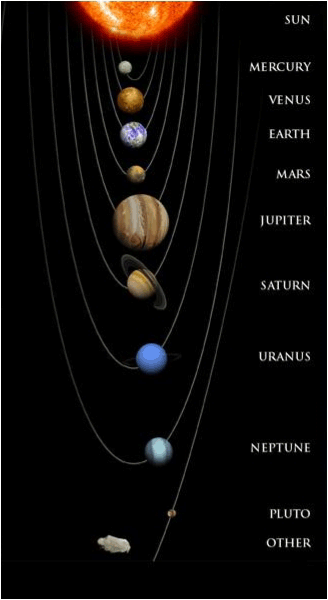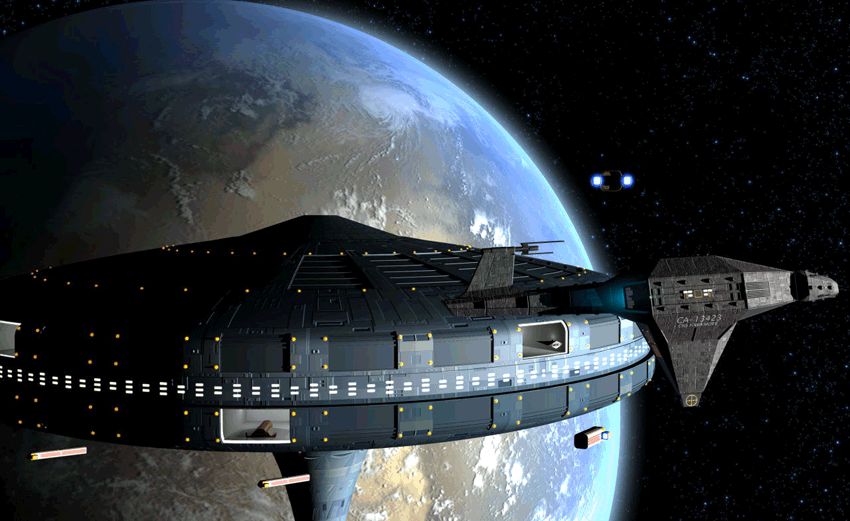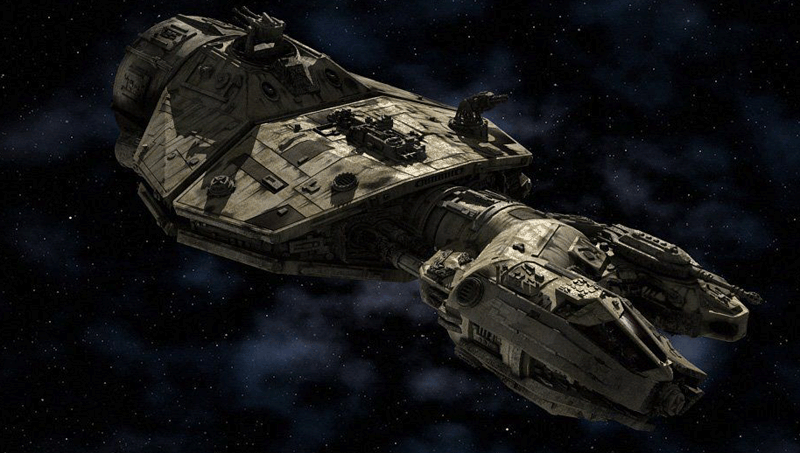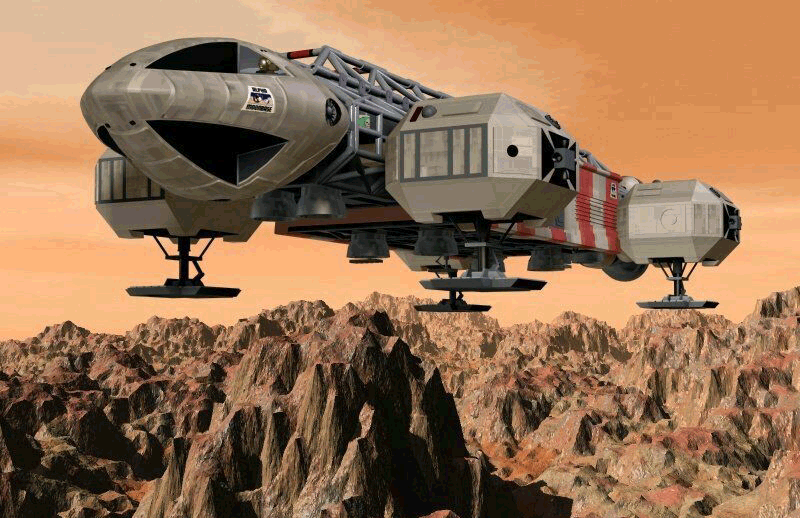| Home Page | Setting | Characters | Plot Twists | Utilities |
These Things of Darkness: Setting It's 2172, and the world has changed a fair bit in the last 170 years. It's 2172, and the world has changed a fair bit in the last 170 years. The War Against Terrorism that kicked off the 21st Century backfired spectacularly, concentrating all the anger and venom of the Muslim world against the United States and Israel. Jerusalem was wiped off the map in 2004 by a suitcase nuclear bomb that Iraq purchased from the Russians. Right wing religious fundamentalists took over the United States in the ensuing wars and by the end of the century, the United Christian States of North America, made up of Canada, Mexico and the continental US, had outlawed scientific research along with higher education for women and people of color.
The Central Caliphates occupied what was left of the middle and near east, engaging in pretty much a constant state of border warfare with the Middle Kingdom (China), a teeming industrial ant heap, and the European Union, a decadent collection of effete poseurs. PanAfrica's population dwindled to the vanishing point, ravaged by disease and famine, despite the best efforts of the relief agencies. The United Nations had collapsed after the UCSNA withdrew its support on religious grounds, and ethnic cleansing wars between what was left of the African tribes finished the job.
Drug money won the on-going struggle in South America, with surprising results. The drug lords wanted to spend their spoils on the finer things of life, and a new renaissance swept through the country, wiping away old political boundaries, and leaving behind a vigorous United Brazil on one side of the Andes and the right-wing Chilean Confederacy with clear ties to North America on the other.
In the Pacific Ocean, the Australian Union took up the flag that had been carried by the US throughout the Twentieth Century and became recognized around the world as a bastion of free thinking and free trade. Old ties with Europe and a thriving business in sophisticated pornography in London, Paris and Berlin kept links open along that route while simple proximity ensured that the AU's principle trading party would be the Middle Kingdom.
As the twenty second century opened, a British research firm working on virtual environments discovered the principles of beamed power. While Europe had maintained a fairly high level of technology even through the Fundamentalist Wars, the ancient countries were drowning in their own pollution. The opportunity to create power elsewhere and send it back along a particle beam immediately opened the race to build power stations in geo-synchronous orbits in space. By 2115, a dozen fission plants were in full operation over Europe and Australia.
Chinese spies tried to steal the technology and failed. Driven to desperation the Middle Kingdom mounted an invasion of Australia in October of 2117. It was over by November, crushed by the swift and deadly use of powerful, pin-point accurate beam weapons mounted on the orbiting space stations.
As the Australians and Europeans built more and more of their infrastructure in space, the economics of lifting huge amounts of raw material up from the Earth's surface in to high orbit became a limiting factor. Mining of metals in the Asteroid Belt had long been a concept of science fiction, and now became a reality. Belter mining companies sprang up overnight and the early pioneers, much like the whaling men of the eighteenth and early nineteenth centuries, suffered through year long voyages to and from the Asteroid Belt to search out the handful of spinning rocks that might actually be worth retrieving. Over the decades, however, the mining companies invested in remote facilities, initially to process the raw materials and subsequently to house and entertain the growing populations of miners.
At this time there are a number of large space stations located close to the Asteroid Belt capable of sustaining life indefinitely. The NOMAD Mining Company is based in a space station called the LightHouse. Like many of the other small concerns, they rent office space there and sublet accommodations to their crews. Regular traffic carries passengers between these space stations and the many facilities in Earth orbit and on the moon, though it is a journey that can take several weeks at best, and only at certain times of the year.
While the Europeans and the Australians dominate space, they are not alone out there. The Middle Kingdom has established its own space program, though it is still forced to purchase its broadcast power systems from the Australians and the British. They also have their own crude space stations in the asteroid belt. Several Brazilian Union pharmaceutical companies have set up research facilities on the moons of Jupiter to analyze and exploit the exotic organic atmosphere of that huge proto-star, and even some of the religious zealots of the UCSNA and the Central Caliphates have taken up residence in space -- usually in isolated, self-contained arks where they can practice an offshoot of their religions so extreme that they cannot be tolerated on the ground. These huge vessels are often located at the gravitationally stable L4 and L5 LaGrange Points along the Earth's orbit. Altogether, it's starting to get pretty crowded out there.
Technologically speaking, there have been some advances beyond our own world, but less than we might suppose who were born into a period of lightning fast growth. Many of the visions for cyber ware and bio-mechanical implants have not been realized for societal rather than technological reasons. Even in the more forward thinking parts of the world, these devices are considered outré, and there are many countries in which someone with anything more sophisticated than a metal pin in a broken bone might be stoned to death or burned for witchcraft. In much the same way that people do not walk around naked in a world where climate control is the norm, people in the twenty second century do not tend to have implants.
Computers are faster and more capable, but the interfaces are governed as much by ergonomics as technology. For most people their phone is their computer, remote control, stereo system, TV, bank, library, game boy, etc. These are about the size of a cigarette pack and open up like a clam shell to offer screen, camera and microphone. Input is mostly verbal and few people bother to key or write any more. For specialized use -- work or play -- headset units of eyepieces and headphones offer pretty much total immersion in virtual worlds. Gloves, or waldos, can be worn to remotely manipulate real or virtual objects.
Devastatingly powerful beam weapons exist, but they are huge constructions that consume power on an astronomical basis. They are mounted on the various nuclear power plants in Earth orbit and in the Belt, but they are not portable in any sense of the world. This is not much of a problem, since their range is basically unlimited. If they can establish a line of sight, they can fire across the solar system if they want to, with very little attenuation of power. If course, at that distance the target will have moved before even a beam travelling at the speed of light can hit it -- so you need to lead the target a bit -- something a computer can work out in a split second.
Personal weapons are pretty much the same as they are today -- chemical slug throwers (pistols, shotguns, rifles) baseball bats, meat cleavers, switchblades, etc. Guns are frowned on in space. They punch big holes in sealed environments and tend to kill everybody very quickly. Tasers work fairly well as a subdual weapon, as long as you don't hit the guidance system by accident. Vehicles tend not to mount weapons, any more than we have a submachine guns installed on our cars or bulldozers. (Any one who can prove to me that they do have such a device installed I will allow to mount a weapon on their vehicle in the game and immediately report to the police in real life.) There are military vehicles used by all of the major nations in space that are armed, and some of the big ones carry beam weapons -- but generally not for personal or industrial use.
Space flight falls into two categories: Getting off the surface of a planet, and moving around in the weightlessness of space. All countries still use rockets to launch vehicles into orbit. It is expensive and dangerous. In space, vehicles move around according to the rules of physics. They have mass and inertia, but no weight -- meaning something is not accelerating them in a constant direction. Thruster jets powered by burning hydrogen in pure oxygen shoot superheated steam out of the ship to generate an equal and opposite thrust. Continued thrust causes acceleration. Cutting off the thrust lets you coast at a constant speed. Stopping requires thrust in the opposite direction, changing direction . . . you get the picture.
Pilots manage the small maneuvers of ships in tight quarters -- docking, moving around in the Asteroid Belt, etc.. Navigators plot long range vectors to meet and avoid a series of moving objects using the least amount of energy or in the shortest amount of time, or a compromise between the two. Ships are mostly full of fuel -- liquid hydrogen and liquid oxygen. They burn together to make heat, and produce water as their product. The water can be boiled to make steam which drives turbines which produce electricity to run all the gadgets and controls. The steam is also used as reaction mass to propel the vessels as described above.
The hydrogen and oxygen are made from water (usually from comets and ice asteroids), by electrolyzing it and splitting it into its component atoms. This is done at the orbiting nuclear power plants -- which are also beaming raw power down to the surface of the planet. On the surface, in the high technology parts of the world -- Europe, Australia, Brazil, and the Middle Kingdom (in decreasing order of technology level infrastructure), electricity is used for everything. Beamed power runs all machinery and vehicles. There is very little pollution and the whole green house gas bit has gone away -- though there is every indication that the planet is entering an Ice Age -- which will take about a hundred thousand years or so to do much harm.
People live lives similar to the ones we live. They go to work, build stuff, market things to one another, etc. Fashions change from area to area and there are big chunks of the world were it is unwise to go (like that's different than it is now!) North America allows visitors from other countries but they are an agricultural society with religious rules and laws just as strict as any of the outlandish Muslim rules we hear of today. In some states women are property. No science is allowed beyond what was known at the end of the twentieth century, and much of that is banned as well. Vehicles are propelled by burning ethanol and much of the countries agriculture is devoted to growing corn to make the ethanol. Music, books, theater, dancing are generally frowned upon and may in some areas be illegal. Common punishments include stoning and burning for religious crimes. Very few people go there. Americans who flee the country put their remaining families at risk, and many state farms are run by slave labor that have committed no other crime than be related to a run-away. Blacks and women have no rights to vote in any state in the union and it is illegal to teach either to read or write. Australia is the closest place to the US today. Europe is artsy and trendy, but very odd in places and very decadent as well. High tech pornography is the number one business in Britain, France and Germany. Out in the Belt, a new set of discs from Berlin is great cause for excitement.
The Chinese are overpopulated and still trying to catch up the free enterprise world. Most of the manufacturing in the world is done in the Middle Kingdom. The Brazilians are rich and interested in pharmaceuticals. They have managed to keep the remnants of their tropical forests alive and they have built a whole, thriving economy on drugs - recreational and medicinal both. Fairly high tech, the Brazilians have many university hospitals and have recently established research facilities on two of Jupiter's moons to extract exotic organics from the planet's atmosphere. There are no national boundaries in space, but almost every large structure is owned by a corporation, which is bound to certain codes of behavior that must match the laws of the country it is incorporated in. There are hundreds of orbiting platforms around earth, mostly power plants, with millions of people living on them. There are several moon bases, mostly research and scientific stuff -- there's nothing worth very much on the moon and it has a gravity well to overcome. In the Asteroid Belt there are seven major space stations, each with room for 50,000 plus personnel to live on. There is a regular run of traffic between each of these stations and the Earth. The stations orbit the sun and each has a period of time every six years when it is in proximity to Earth -- this is the time of maximal traffic for that station. But traffic can and does go to every station all the time. It just takes a lot longer when the station is on the other side of the sun from the Earth. Shortest time to travel from Earth to the Belt -- three weeks. Longest time -- seven months. Average time in a survey ship looking for mineral -- two weeks with one week off, usually in the mother ship, not at a space station. The mother ship returns to the space station every six months to re-supply, and lays over for a month for maintenance. Most mother ships have a nominal crew of six and an additional five or six pilots working the survey modules on rotating schedules. |



